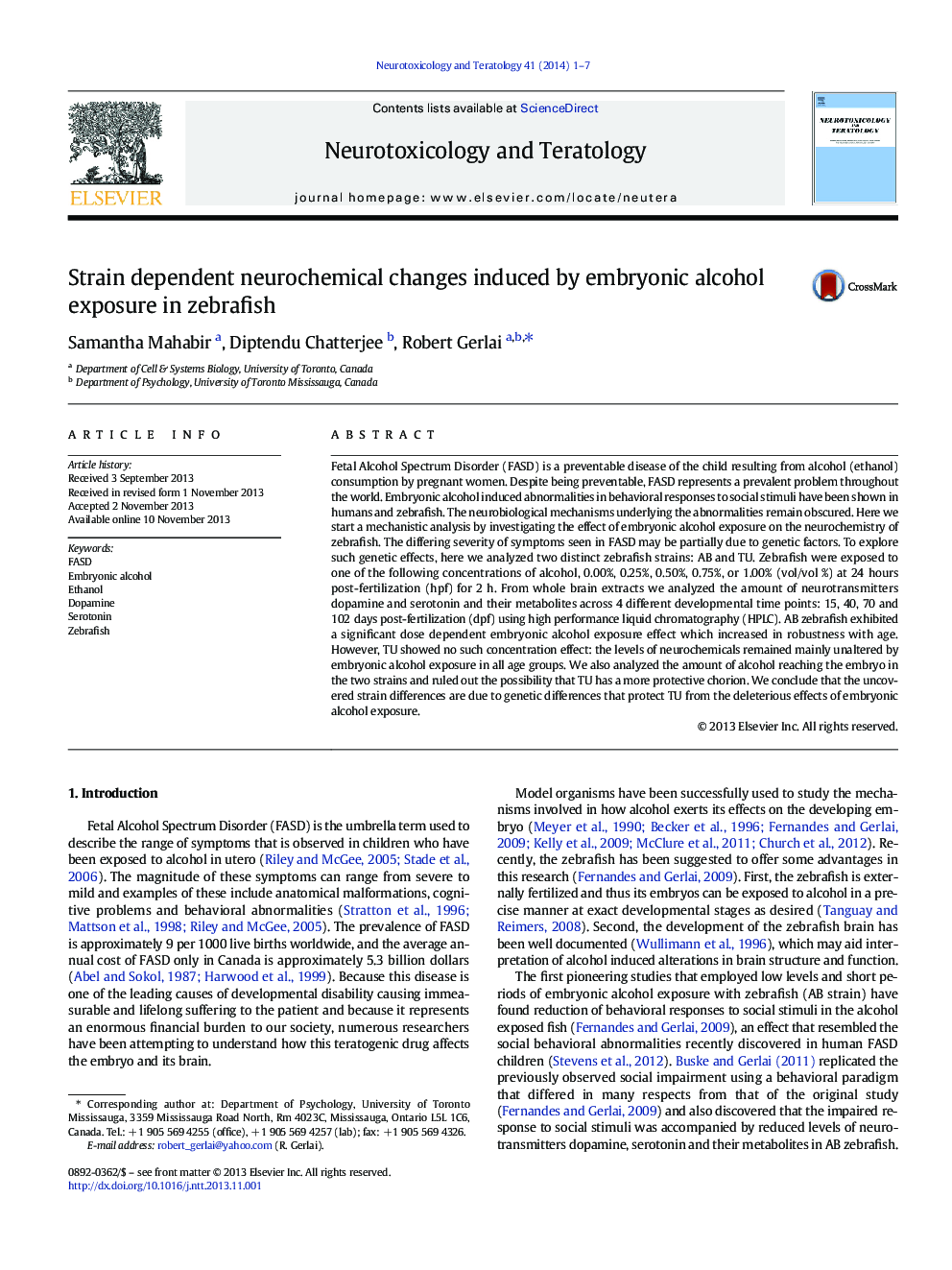| کد مقاله | کد نشریه | سال انتشار | مقاله انگلیسی | نسخه تمام متن |
|---|---|---|---|---|
| 2591042 | 1562094 | 2014 | 7 صفحه PDF | دانلود رایگان |
• AB and TU strain zebrafish embryos were exposed to low doses of ethanol at 24 hpf.
• Dopamine, DOPAC, serotonin and 5HIAA levels were analyzed using HPLC.
• The analyses were conducted for 15, 40, 70 and 102 day post-fertilization old fish.
• Robust reduction of neurochemical levels was found in AB but not in TU.
• The reduction was dose dependent and became increasingly pronounced with age.
Fetal Alcohol Spectrum Disorder (FASD) is a preventable disease of the child resulting from alcohol (ethanol) consumption by pregnant women. Despite being preventable, FASD represents a prevalent problem throughout the world. Embryonic alcohol induced abnormalities in behavioral responses to social stimuli have been shown in humans and zebrafish. The neurobiological mechanisms underlying the abnormalities remain obscured. Here we start a mechanistic analysis by investigating the effect of embryonic alcohol exposure on the neurochemistry of zebrafish. The differing severity of symptoms seen in FASD may be partially due to genetic factors. To explore such genetic effects, here we analyzed two distinct zebrafish strains: AB and TU. Zebrafish were exposed to one of the following concentrations of alcohol, 0.00%, 0.25%, 0.50%, 0.75%, or 1.00% (vol/vol %) at 24 hours post-fertilization (hpf) for 2 h. From whole brain extracts we analyzed the amount of neurotransmitters dopamine and serotonin and their metabolites across 4 different developmental time points: 15, 40, 70 and 102 days post-fertilization (dpf) using high performance liquid chromatography (HPLC). AB zebrafish exhibited a significant dose dependent embryonic alcohol exposure effect which increased in robustness with age. However, TU showed no such concentration effect: the levels of neurochemicals remained mainly unaltered by embryonic alcohol exposure in all age groups. We also analyzed the amount of alcohol reaching the embryo in the two strains and ruled out the possibility that TU has a more protective chorion. We conclude that the uncovered strain differences are due to genetic differences that protect TU from the deleterious effects of embryonic alcohol exposure.
Journal: Neurotoxicology and Teratology - Volume 41, January–February 2014, Pages 1–7
